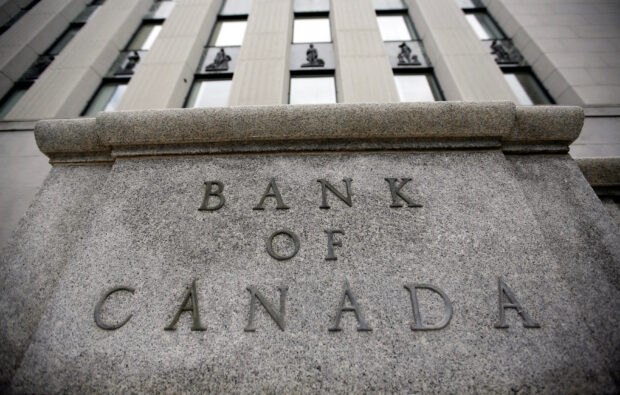
The Bank of Canada building is pictured in Ottawa June 1, 2010. REUTERS/Chris Wattie//File photo
OTTAWA — The Bank of Canada (BoC) kept its key overnight rate steady at 5 percent on Wednesday as expected but dashed the hopes of borrowers seeking relief, saying underlying inflation meant it was too early to consider a cut.
Governor Tiff Macklem, saying he realized monetary policy worked slowly and caused unavoidable pain, declined to lay out a calendar for rate cuts.
“We expect to see further progress but we think it’s going to be slow, it’s going to be uneven …. Fundamentally, we need to see more progress,” he told Reuters in an interview after the rate announcement.
Overall inflation stands at 2.9 percent , still well above the bank’s 2 percent target.
Macklem reiterated that the central bank expected inflation to start dipping in the second half of the year but expressed concern that closely watched measures of core inflation, which strip out some volatile items, were still too high and needed to come down.
READ: Canada’s January inflation rate drops more than expected to 2.9%
“If core stays where it is, probably … our forecast that total (CPI) comes down isn’t going to materialize. So that’s why we’re putting a lot of focus on those core measures,” he said in the interview.
Decision pushed Canadian dollar up
The news to keep rates on hold helped push the Canadian dollar up 0.5 percent to 1.3521 per U.S. dollar, or 73.96 U.S. cents.
Shortly after the rate announcement, data showed that Canadian money markets now see a 23-percent chance of a rate cut in April, down from 43 percent. They have also pushed back bets for a fully priced in cut to July from June.
Macklem sidestepped questions from Reuters about whether the bank could cut in April, saying “we’re going to be taking our decisions one at a time”.
READ: Bank of Canada holds rates, policy talks shift toward when to cut
The BoC increased rates by 475 basis points to a 22-year high between March 2022 and July 2023 and has kept them on hold since then for five consecutive meetings in its efforts to cool inflation while avoiding pushing the country into a recession.
While this has cooled inflation from 8.1 percent in June 2022 to below 3 percent, price pressures especially from shelter and wages have continued to tick higher.
Macklem said more time was needed to ensure inflation fell towards the central bank’s 2 percent target.
“It’s still too early to consider lowering the policy interest rate,” he said in remarks to reporters.
Interest rate cut bets
A majority of economists in a Reuters poll last week forecast the central bank would start cutting interest rates in June. But their views started shifting after the announcement on Wednesday.
“It sounds as if the Bank of Canada is very much following the Federal Reserve footsteps in expressing a need for greater confidence in the pace of disinflation,” said Karl Schamotta, chief market strategist at Corpay.
Inflation largely stayed above 3 percent for most of last year but eased to 2.9 percent in January.
READ: Canada retools inflation baskets, more focus on food, gas prices
Macklem reiterated his comments from January’s policy announcement that the discussion within the Governing Council was shifting from whether the rates were restrictive enough to how long they needed to stay at their current level.
“We want to give Canadians as much information as we have, but we also don’t want to give a sense of false precision,” Macklem told reporters.
The bank is particularly concerned about elevated shelter price inflation, which has been pushed up by a housing shortage and high rates.
Macklem, speaking a month before the federal budget is due to be delivered, told Reuters that the housing problem could only be solved by increasing supply and policies that spur demand should be avoided.